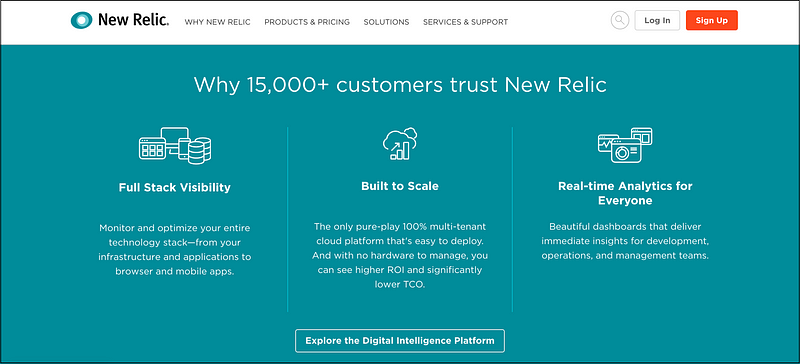Own the language, own the customer.
Every industry has a language, and every company can either choose to use that language or create a new one.
In manufacturing, we typically speak a language of ethics. Values, quality, hard work, jobs, output and history all point to an ethical hierarchy in the space.
In cancer medicine it’s a language of conflict, with phrases like ‘the war on cancer’, ‘battling the disease’, ‘ ‘fighting the illness’, ‘staying brave’ and ‘soldiering on’.
In the beauty industry, we used to speak a language of ideals — youth, delicateness, lightness and western definitions of femininity. Today that language is (slowly) evolving to be one of identity instead — body positivity, diversity, strength, resistance, waving your flag and so on.
Regardless of the industry, a specific language exists… and that language matters.
Language is a crucial element in your brand strategy because it frames the entire user experience for your customers.
When you choose to adopt a certain vernacular, you’re creating the foundation on which customers will build their perceptions.
The Power Of An Educated Customer
Language educates and influences your customer in three important ways:
- Changed behaviors: How, when or where to use it. This is especially important in new categories, or when there’s very limited time to educate (such as mobile app on-boarding experiences).
- Changed expectations: The value of using it. Important if the value is intangible or mundane (like money-saving or insurance).
- Changed beliefs: Why you’re better. Critical, especially for challenger brands or new entrants that need to migrate users from competitors, or when the perceived cost of migration is high.
There’s no greater power than that of an educated customer. When your user really understands how to use you, how using you creates value for them, and why there’s no one else that can do it better than you, then the playing field shifts in your favor.
There are some great examples of how companies in very different industries have leveraged language to their advantage.
Here are three ways to control the conversation.
1. The language of identifiers.
We’re often inclined to compare apples to apples when qualifying a purchase as customers. We may look at one platform compared to another and try to see which is lacking in comparable features.
But sometimes, comparing apples to apples can hide important, hard-to-describe details that make one option far more superior to another.
Think Slack channels, Lululemon’s athleisure category or Ikea’s flat-packed furniture. All of these identifiers gave us subtle clues for how something should be used or compared. They revealed a hidden value or use case we may not have otherwise understood before purchase.
The same mechanic works for more abstract, experience-driven identifiers as well.
We all know Starbucks isn’t a brand powerhouse because of its superior coffee or fair prices. Starbucks, more than anything else, is a deeply comfortable space akin to home.

Whether you need to meet a colleague, find a place to relax and read, need a power outlet to charge up your phone, are desperately seeking a free cup of cold water in a foreign city, or have to get some work done, you understand that Starbucks is the only place to go… every time.
So how did we come to know that?
Because Starbucks gave it a new name.
Early in their brand messaging, they were smart to insert subtle references to The Third Place — where “all the comforts of your home and office” are available to you, without judgement and without limit.
It was an identifier that didn’t exist before, and once it did, we suddenly understood where Starbucks fit into our daily lives and hearts. We understood how, when and why to use it.
Naming it The Third Place allowed us to understand its value in a way that couldn’t be explained through words otherwise.
Creating new identifiers forces your audience to be open to an entirely new kind of experience, belief or expectation.
Plenty of brands try to communicate a home or work environment, but no one else has been able to make us inherently understand it the way Starbucks has.
If they simply called it a ‘workspace’ or ‘your second home’, we would have still failed to understand the true depth of value this Third Space afforded us as consumers.
The new identifier forced us to erase any preconceived notions or expectations, and be open to a different kind of coffee house experience.
2. The language of metrics.
Oftentimes, the biggest player in the room dictates the metrics we all go by.
Whether it’s number of features, size and number of customers, revenue, amount of licenses sold, being named “Top Company” XX years in a row, number of countries launched, company size, growth or anything else, those metrics work for them, but they may not work for you.
So why do we aspire to meet or exceed those same measures (and usually fail)? Because we let another company dictate the language of metrics.
Any metric that somehow quantifies value to the customer, with hard numbers or soft descriptions, falls into the language of metrics and should be carefully considered before blindly followed.
In the big data industry, the language of metrics has taken an especially unremarkable turn.
A quick survey of some major players shows the same metrics over and over again:
Hortonworks
Three generic measures meant to help the customer make a decision.

IBM Analytics
Different, but not really.

New Relic
Remarkably similar.

Iguazio
A promising newcomer in the space that still sounds the same.

This list could go on and on.
When you use the same metrics as everyone else, all you’re saying is (surprise!) you’re like everyone else.
If you’ve read any of my writing, you know that the golden rule of brand strategy is to be different, not better — and certainly not the same.
In The 16 Rules of Brand Strategy, I wrote:
Don’t play in someone else’s backyard.
Many spaces with two major players fall into a “better” trap. Box’s brand is a better version of Dropbox, but that does nothing to differentiate them. Better is actually worse. Different is what matters.
MapR seems to get that.
They don’t use the same metrics as everyone else, and it makes the customer think differently about how to compare their platform to others:

Agility and engines.
That’s different.
It’s a different language to measure by, and a set of parameters that puts MapR in a better position than if they had just repeated the same metrics of scalability, number of customers, speed and security as others.
When you change the metrics, you move the goalpost closer to your brand and farther away from your competitors.
Check your language and see if there isn’t another set of metrics that matters more to your customers, while sidelining your opponents.
3. The language of vocabulary.
Your day-to-day vocabulary matters. It’s another form of language that signals what people can expect from your brand. It also dictates CTAs and consumer behavior.
And it’s easy to see in a place like the nonprofit sector.
In charity, we often speak in complementary tones of lack and pride. Themes of needing, scarcity and suffering are meant to inspire guilt and short-term action… while language that congratulates us for pulling through and saving, rescuing, or collaborating delivers the quick relief we need from that guilt.



Speaking in a vocabulary that people expect from your brand can be a good thing.
After all, if you’re looking for something purely utilitarian, like car tires for example, you’re not looking for anything aspirational. You just want to know that the tires work, right?
Maybe, but Falken Tires decided to challenge that thinking.
In a space where much older and more established tire makers already owned huge market share, they had to create a new conversation that put them at an advantage.
In 2016, they changed their tagline from Falken High Performance Tires to something very different with On The Pulse.

“Competitors are all communicating on quality, reliability and safety but for a challenger brand like Falken we don’t have 50 years to build a reputation,” according to their Head of Marketing in Europe, Stephan Cimbal — and he’s right.
On The Pulse is human-centered language that shifts the discussion away from reputation and toward Falken’s core strength: a youthful, adrenaline-fueled experience that ties into their connection with motorsports, soccer, and events like Red Bull’s air race.
They saw “an area of communication that’s not used by competitors” and took advantage of that in order to be “something like the Red Bull of the tire industry: younger, dynamic, quicker and not so ‘business as usual’ like the others”.
This is a challenger tire brand that revolves around excitement, while others are tethered to heritage. Suddenly, the consumer’s field of perception widens and Falken falls into the consideration set.
By changing the language, they shifted the playing field.
You can do the same.
Your language is choice. An important one.
So many brands default into whatever has already been defined by another company— usually the oldest (or the biggest) player in the space — and not only play by someone else’s rules, but miss a huge opportunity to create a new set of rules that benefit themselves.
A new language can unlock audiences that simply couldn’t hear you before.
Whoever owns the language, owns the customer.
Choose your words carefully.




